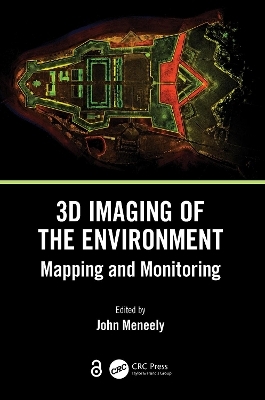
3D Imaging of the Environment
CRC Press (Verlag)
978-0-367-33793-3 (ISBN)
This is a comprehensive, overarching, interdisciplinary book and a valuable contribution to a unified view of visualisation, imaging, and mapping. It covers a variety of modern techniques, across an array of spatial scales, with examples of how to map, monitor, and visualise the world in which we live. The authors give detailed explanations of the techniques used to map and monitor the built and natural environment and how that data, collected from a wide range of scales and cost options, is translated into an image or visual experience. It is written in a way that successfully reaches technical, professional, and academic readers alike, particularly geographers, architects, geologists, and planners.
FEATURES
Includes in-depth discussion on 3D image processing and modeling
Focuses on the 3D application of remote sensing, including LiDAR and digital photography acquired by UAS and terrestrial techniques
Introduces a broad range of data collection techniques and visualisation methods
Includes contributions from outstanding experts and interdisciplinary teams involved in earth sciences
Presents an open access chapter about the EU-funded CHERISH Project, detailing the development of a toolkit for the 3D documentation and analysis of the combined coastline shared between Ireland and Wales
Intended for those with a background in the technology involved with imaging and mapping, the contributions shared in this book introduce readers to new and emerging 3D imaging tools and programs.
John Meneely is the founder of 3D Surveying Ltd, having previously worked as Senior Research Technician at the School of Natural and Built Environment, Queen’s University, Belfast. With over 30 years of experience in practical research, he has worked all over the world with interdisciplinary teams across the earth sciences. His expertise lies in using a variety of 3D laser scanning and other digital technologies to map, monitor, and visualise the built and natural environment across a wide range of spatial and temporal scales. He has presented his work at many national and international conferences and been the keynote speaker at several 3D digital technologies conferences. He was on the advisory board for SPAR Europe for two years – Europe’s largest 3D scanning conference – and invited to speak at the 2009 International Council on Monuments and Sites (ICOMOS) symposium in Malta on the use of terrestrial laser scanning. His early research and publications focused on studying the catastrophic decay of building stone under complex environmental regimes and the digital documentation of natural and built heritage sites for several geological, geographical, archaeological, managerial, and educational applications. His recent interest has extended his data collection skills into 3D visualisation via 3D printing, VR, and AR. He is currently advising several SMEs, primarily in the environmental monitoring, built heritage, construction, and facilities management sector on integrating 3D technologies into their workflow.
1. Digital Documentation and Digital Innovation in Practice. 2. Mapping the Urban Environment with a Handheld Mobile LiDAR System—A Case Study from the UrbanARK Project. 3. Using Drones to Map and Visualise Glacial Landscapes. 4. Laser Scanning of a Complex Cave System during Multiple Campaigns. 5. Digitizing Giant Skeletons with Handheld Scanning Technology for Research, Digital Reconstruction, and 3D Printing. 6. Mapping, Monitoring, and Visualising Stone Decay in the Urban Environment. 7. Unpiloted Airborne Laser Scanning of a Mixed Forest. 8. Digital Mapping and Recording of Inishtrahull Island and Its Built Heritage in 24 Hours. 9. CHERISH: Development of a Toolkit for the 3D Documentation and Analysis of the Marine and Coastal Historic Environment. 10. 3D in the Construction of a Full-Scale Replica of St. Patrick’s Cross, Downpatrick. 11. Thermography Using Unmanned Aerial Vehicles. 12. Reconstruction of the Ballintaggart Court Tomb Using 3D Scanning, 3D Printing, and Augmented Reality (AR). 13. Terrestrial Laser Scanning for Monitoring and Modelling Coastal Dune Morphodynamics. 14. Creating a Virtual Reality Experience of Fingal’s Cave, Isle of Staffa, Scotland.
| Erscheinungsdatum | 03.11.2023 |
|---|---|
| Zusatzinfo | 6 Tables, black and white; 18 Line drawings, color; 7 Line drawings, black and white; 110 Halftones, color; 8 Halftones, black and white; 128 Illustrations, color; 15 Illustrations, black and white |
| Verlagsort | London |
| Sprache | englisch |
| Maße | 156 x 234 mm |
| Gewicht | 520 g |
| Themenwelt | Reisen ► Reiseführer |
| Naturwissenschaften ► Geowissenschaften ► Geografie / Kartografie | |
| Sozialwissenschaften ► Soziologie ► Spezielle Soziologien | |
| Technik ► Umwelttechnik / Biotechnologie | |
| ISBN-10 | 0-367-33793-2 / 0367337932 |
| ISBN-13 | 978-0-367-33793-3 / 9780367337933 |
| Zustand | Neuware |
| Haben Sie eine Frage zum Produkt? |
aus dem Bereich


